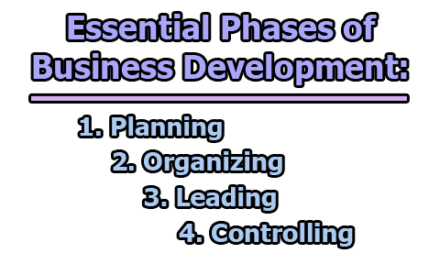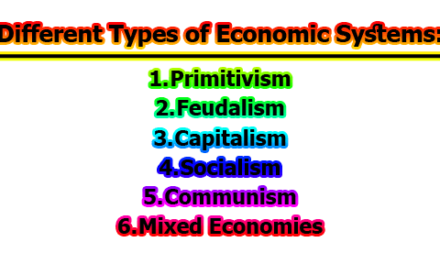Infrastructure Contributes to Economic Growth:
Infrastructure plays a crucial role in fostering economic growth and development in a country. It refers to the fundamental physical and organizational structures and facilities needed for the operation of a society, such as transportation systems, energy networks, communication systems, and public utilities. Here are some ways in which infrastructure contributes to economic growth:
1. Enhanced Productivity: Efficient infrastructure, particularly transportation networks, significantly reduces the cost and time required for the movement of goods and people. This enhanced connectivity leads to increased productivity across various industries. For example, a study by the World Bank found that a 10% increase in infrastructure quality can result in a 1% increase in economic growth in developing countries (“Infrastructure and Growth: A Survey of the Literature from a Microeconomic Perspective,” World Bank, 2004).
2. Attracting Investment: Countries with well-developed infrastructure are more attractive to both foreign and domestic investors. Infrastructure investments create a stable environment for business operations. A report by the McKinsey Global Institute states that infrastructure investments are critical for economic development and that developing countries can experience a 20% increase in foreign direct investment (FDI) when they improve their infrastructure (“Infrastructure Productivity: How to Save $1 Trillion a Year,” McKinsey Global Institute, 2013).
3. Job Creation: The construction and maintenance of infrastructure projects directly lead to job creation. These jobs range from construction workers to engineers, with a ripple effect on suppliers of raw materials and equipment. The American Society of Civil Engineers (ASCE) notes that every $1 billion invested in infrastructure creates 13,000 jobs (“Failure to Act: Closing the Infrastructure Investment Gap for America’s Economic Future,” ASCE, 2016).
4. Reduced Transaction Costs: Efficient infrastructure minimizes transaction costs for businesses, including costs related to transportation, communication, and utilities. A comprehensive report by the World Economic Forum states that inadequate infrastructure can add up to 40% in logistics costs, making goods more expensive and reducing competitiveness (“The Global Competitiveness Report 2021,” World Economic Forum).
5. Rural Development: Infrastructure development in rural areas is crucial for stimulating economic growth and improving living standards. For instance, the construction of better roads and the provision of electricity can help rural communities access markets and services more effectively. The Asian Development Bank emphasizes the importance of rural infrastructure in reducing rural poverty and boosting agricultural productivity (“Rural Infrastructure for Inclusive Growth,” Asian Development Bank, 2016).
6. Innovation and Technological Advancement: Infrastructure, especially robust information and communication technology (ICT) networks, fosters innovation and technological advancement. This, in turn, leads to the growth of knowledge-based industries. High-speed internet and reliable telecommunications networks, for example, facilitate the development of new technologies and the creation of high-value jobs. The National Bureau of Economic Research (NBER) has found a strong correlation between the deployment of broadband internet and economic growth, particularly in rural areas (“The Economic Impact of Broadband Deployment,” NBER, 2017).
7. Urbanization and Urban Growth: Well-planned urban infrastructure can accommodate rapid urbanization, leading to increased economic activity. Urban centers often become hubs for various industries, businesses, and services. These concentrated economic activities in cities can attract a skilled workforce and generate higher GDP per capita. The United Nations, in its World Urbanization Prospects report, predicts that the global urban population will continue to grow, highlighting the pivotal role of urban infrastructure in economic development.
8. Quality of Life: Infrastructure significantly contributes to the quality of life for citizens. Adequate healthcare, education, sanitation, and transportation facilities enhance living standards and overall well-being. For instance, the World Health Organization (WHO) emphasizes that access to quality healthcare infrastructure is essential for improving health outcomes and productivity (“Health and Economic Growth,” WHO, 2017).
9. Disaster Resilience: Infrastructure can play a crucial role in mitigating the economic impact of natural disasters. Well-constructed infrastructure, such as levees, flood control systems, and disaster-resistant buildings, can protect valuable agricultural land, urban areas, and critical economic assets from damage caused by natural disasters. A study by the National Institute of Building Sciences emphasizes the cost savings associated with disaster-resilient infrastructure (“Natural Hazard Mitigation Saves: 2017 Interim Report,” National Institute of Building Sciences).
10. Long-term Economic Sustainability: Investment in infrastructure is often considered a long-term strategy for economic development. Well-planned and well-maintained infrastructure projects create a solid foundation for sustained economic growth over decades. The Organization for Economic Co-operation and Development (OECD) highlights the long-term benefits of infrastructure investment in supporting economic growth and development (“Investing in Climate, Investing in Growth,” OECD, 2017).
It’s important to note that the quality and appropriateness of infrastructure development, as well as its funding and maintenance, are key factors in realizing these economic benefits. Governments, the private sector, and international organizations often work together to plan and implement infrastructure projects that align with economic development goals.

Assistant Teacher at Zinzira Pir Mohammad Pilot School and College










